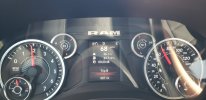To poke the bear if you will.
Slight ethanol(normal %) and high octane mix isn’t a bad thing.
I’m just going to leave this here....
and sit at the table with sign that says change my mind lol
Pure ethanol has a high octane number (99), but an energy density that is 32.5% lower than gasoline. This means that adding ethanol in any proportion to regular gasoline will increase the octane number, but will lower the fuel economy. This might seem contradictory because most people believe that high octane fuels will give them a higher fuel economy (measured as miles per gallon). Octane rating, however, is not a measure of the energy content of the fuel, but instead is a measure of its ability to burn at high compression ratios without auto-igniting.
One US gallon of gasoline contains 114,000 BTU of energy; depending on the time of year, and depending on what is in the gasoline. It is getting harder to find gasoline's that does not contain 5 to 10% of Ethanol.
Ethanol is ethyl alcohol; the kind of alcohol in beverages; beer, whiskey, bourbon, vodka, ****tails, etc.. It takes one and a half US gallons of ethanol to equal the energy in one US gallon of gasoline; the reason... because ethanol only has 76,100 BTU's of energy per gallon.
Less energy means less miles per gallon.
Gasoline's blended with Ethanol will lower MPG in most engines. The EPA says Fuel efficiency can decrease by 1.5% to 3%.
It is the BTUs that allows us to get the best fuel economy. Adding alcohol, of any kind, to gasoline, dilutes the fuel and lowers the heat energy.
Blends of alcohols can be tested to determine what is called a “Blending Octane Value” or BOV. Basically, the octane rating of an alcohol/gasoline blend is compared to the octane rating of the gasoline without alcohol and some math is done to calculate what the effect of the alcohol was on the octane of the gasoline. Thus, a BOV is determined. However, a BOV is not the same thing as a normal octane rating.
Octane numbers at the pump are determined by taking the average of two ASTM-specified octane tests – the Research Octane Number test (RON, or simply “R”) and the Motor Octane Number test (MON, or simply “M”). The average is expressed as (R+M)/2 and is sometimes referred to as the Antiknock Index or AKI. In the United States, pump gas is sold based on AKI and it is this value that we typically use to represent a fuel’s octane rating. The square yellow octane stickers you see on gasoline dispensers indicate the (R+M)/2 octane rating.
BOVs for methanol and ethanol typically overstate octane. This is because the law of diminishing returns applies. While a little alcohol can bump octane by a few numbers, twice as much alcohol does not result in twice as much octane increase. So while it may look like an alcohol has a high octane number when a small amount is used (as in determining a BOV), its real octane value is not as high. Problem is, the real number can’t be determined… so we’re left to guessing.













